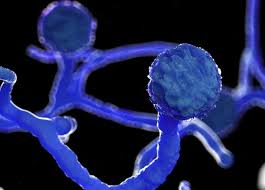COMPLETE DIET CHART FOR SUGAR PATIENT
Sugar patients, otherwise called diabetics are individuals who experience the ill effects of a wellbeing problem called diabetes. Diabetes is a medical issue in which the blood sugar level of the body is higher than as far as possible. The body gets glucose from the food that you eat, which is moved to the cells to give them energy by a chemical known as insulin.
Diabetes happens when there is an aggravation in this interaction because of either the body not making insulin (otherwise called Type 1 Diabetes) or the body not utilizing, just as not making insulin (otherwise called Type 2 Diabetes). Type 2 diabetes is the most well-known type of diabetes that influences individuals.
Diabetes is a deep rooted issue and must be controlled not restored. Over the long run, high glucose levels in the body are known to antagonistically affect the kidney, eyes and nerves. Additionally, individuals with diabetes are at more serious danger of respiratory failures and stroke. Diabetes is an advancing issue and heightens its effect on the body if not kept inside control. One compelling approach to control diabetes, aside from the prescriptions, is to keep the food you eat under check. As referenced, glucose is gotten from the food you eat, so when the food is observed, the sugar level will be in line all the while.
What is the eat eating routine for diabetic patient?
Diet for Diabetics (Diabetes Diet) is a nutritional aide for individuals with diabetes to help them choose what types of food sources to eat. There is no one predefined diabetes diet that works for all individuals with diabetes. The purpose of any diabetic dinner plan is to accomplish and maintain a healthy diet with great power over the disease, including controlling blood sugar and blood lipid levels, such as keeping a solid weight and great nutrition.
Medical services experts and nutritionists can offer counsel to assist you with making the best diet for your diabetes. Nutritionists can help you discover plans and cooking tips to assist with dinner arranging and planning. As we know that HEALTH is the key factor for the survival each individual.
How many carbs, fats and proteins can a healthy diabetic diet plan eat?
The amount of calories (carbs), fat, and protein in your system will depend on how many calories you should burn. every day. Your age, sexual orientation, the measure of activity you get, and your action level influence the quantity of calories you need to eat to acquire, lose, or keep a sound weight.
A high-fiber diet has been displayed to further develop glucose and cholesterol levels in individuals with type 2 diabetes. Fiber can be found in numerous food sources, particularly entire grains, beans, vegetables, nuts, and natural products.
Will I be able to take sugar in my diabetic diet plan?
Most specialists and other clinical or medical care proficient accept that individuals on a diabetic eating routine can have limited quantities of sugar, insofar as they are important for a sound and adjusted nourishment procedure. Table sugar doesn't raise blood glucose more than starches.
Will I be able to drink alcohol in my diabetic eating routine?
Savoring alcohol control may be okay for some individuals with diabetes. It's ideal to drink alcohol when your glucose levels are under acceptable control, and remember that wine and mixed drinks contain sugar, and alcohol has a lot of calories. Your PCP or medical professional can advise you on whether alcohol can be a safe part of your eating plan.
What food sources raise glucose levels?
The degree to which carbs raise glucose levels is known as their glycemic record. High glycemic list food sources raise glucose levels quicker and to a more noteworthy degree than low glycemic record food sources.
High glycemic list food varieties include:
- White bread, bagels
- Short-grain white rice
- Corn pieces or puffed rice grain
- Chestnut potatoes
- Saltine wafers, pretzels, rice cakes
- Pumpkin
- Melons
- Pineapple
- Popcorn
What food varieties assist with keeping up with high sugar level?
For example, these food sources can top you off without an emotional soar in blood sugar levels:
- 100% stone-ground whole wheat or pumpernickel bread
- rolled or steel-cut grain
- Rice, Cereal, Changed on Bulgur
- Yams, corn, sweet potatoes, lima/margarine beans, peas, vegetables and lentils
- many organic products
- Non-sluggish vegetables (these contain less sugar than soft vegetables)
- Protein and fiber can also help you feel full without raising glucose levels as much as carbs.
Do Not Eat these food items
Foods can help you manage your blood glucose level if you can balance high- GI and low- GI foods. If you like to have high- GI foods, you can have them but either in limited portion sizes or you can pair these foods with protein to manage diabetes and feel full for longer.
Some high-GI foods are:
- White bread
- Puffed rice
- White rice
- White pasta
- White potatoes
- Popcorn
- Melons
- Pineapple (source)
You should avoid or limit the following foods to get healthy and best diet for diabetic patients:
High-GI fruits:
Fruits such as melons and pineapples are high on the GI scale, which means that they can increase your blood glucose. If you are a diabetic patient, you need to either eliminate or limit eating these two fruits. Rest fruits are low on the GI- scale, so you can eat any other fruit. (source)
Saturated and Trans fat:
Saturated and Trans fats are unhealthy fats which are not needed by the diabetic patient. These fats are mostly found in processed or fried foods such as chips, baked goods, and fries. People with diabetes should avoid eating them. They can substitute these snacks with much healthier snacks, including nuts and fruits. (source)
Sugary drinks:
Sugary drinks are not a good diet for diabetic patients. These drinks include a lot of saturated fat and sugar, such as energy drinks, some shakes, cold drinks. These drinks have the power to imbalance a person’s insulin level. Try to drink infused water or water instead of sweetened beverages. Also, try to avoid putting sugar in your coffee and tea. If you cannot drink it without sugar, then you should find a suitable substitute for sugar. (source)
Salty foods:
Foods with a high level of salt increases blood pressure. They are also called sodium. People with diabetes must limit eating salty foods.(source)
Alcohol:
You should lower down your intake of alcohol. If you are a woman, you can have one drink in a day, and if you are a man, you can have two drinks in a day. It is always recommended to eat some food while you drink. (source)
On the off chance that you make a couple of strides and adhere to the guidelines, you can take your glucose level back to ordinary. Simply take out the don'ts from your life to have a revived and solid way of life. On the off chance that you are a diabetic patient and need to learn more approaches to battle diabetes, EDUKOSH got you covered. If it's not too much trouble, visit the site to find out additional.
Frequently Asked Question on Diet For Diabetic Patient
1. What is Diabetes Mellites? How would you get it?
A significant degree of glucose in the blood is called diabetes. An awful way of life, unfortunate dietary patterns, stationary life, family ancestry, and so forth all assume significant parts in an individual contracting Diabetes. The most well-known kinds of diabetes are:
- Type 1 Diabetes Mellitus
- Type II Diabetes Mellitus
- Prediabetes
- Gestational diabetes
2. Am I at risk of getting diabetes?
- Overall, if you are 45 or older, you have a higher risk of developing diabetes.
- if you are overweight
- You have a background marked by diabetes in your family
- you have high blood pressure
- Significant degree of low HDL, blood lipids
- had diabetes while pregnant or gave birth to a baby who was overweight (more than 9 pounds)are really latent (practice less than 3 times per week)
3. What are the normal indications of Diabetes Mellitus?
- Expanded thirst/hunger
- Weight reduction
- Regular pee
- Weariness
- Moderate injury mending
- Parasitic disease
- Shivering sensation in limits
4. How can I say whether I have Diabetes?
On the off chance that you have any at least one of the side effects referenced above, converse with your medical services supplier about getting a blood test to check your blood glucose level.
To know whether you have diabetes or Prediabetes (A condition where blood glucose levels are higher than typical however not sufficiently high for an analysis of Diabetes), lead a Glycated hemoglobin (A1C) test.
An A1C level of 6.5 percent or higher on two separate tests demonstrates that you have diabetes. An A1C somewhere in the range of 5.7 and 6.4 percent shows prediabetes. Underneath 5.7 is viewed as typical.
5. How to treat Diabetes? Is it accurate to say that you should proceed with the prescriptions for lifetime?
Diabetes isn't treatable, yet it is reasonable. After it is absolutely leveled out, you should take the endorsed drug to keep up with sound blood glucose levels. Continue to check your sugar levels consistently to comprehend the situation with your control. As we know that health is important factor of the survival of each individual.
6. How would I be able to deal with forest Diabetes?
A Counteracting diabetes requires real effort every day, burning and maintaining an even and healthy eating routine that is low in fat and doesn't contain too many calories is an absolute necessity. Getting thinner is likewise a need in specific cases whenever required
7. What are the intricacies of Diabetes Mellitus?
- Diabetes Mellitus can influence your kidney, heart, eyes and nerves
- Expanded occurrence of ischemic coronary illness
- Fringe vein illness, a typical circulatory issue wherein limited courses decrease blood stream to your appendages. At the point when you foster fringe course infection (PAD), your limits, as a rule your legs don't get sufficient blood stream to stay aware of interest
On the off chance that a diabetic individual has a cut or an injury it ought to be dealt with quickly, whenever left untreated the injury will get contaminated and constriction of gangrene is a real chance. The lone conceivable answer for this is the removal of the contaminated body part. Diabetic patients have expanded vulnerability towards strokes
8. How to oversee Diabetes?
- The main part of diabetes monitoring is your diet, you should follow a sound, adjusted and consistent diet
- If you have diabetes, you should exercise regularly and be as dynamic as can really be expected.
- You can check your blood sugar and medicine yourself
- Spend 45 minutes walking something like 5-6 days per week
- Accept medicines as recommended, do not bind any parts
- Routine development and examinations are required
When you foster Diabetes you need to take most extreme consideration of your way of life as the least difficult of blunders in overseeing Diabetes can result to genuine inconveniences.
Disclaimer: The data included on this site is for educative purposes only and is not planned to be sub for clinical treatment by skilled medical care. Because of individual needs, the reader should consult their physician to determine the appropriateness of the data for the reader's situation.
READ OUT SOME RELEATED LINKS:
25 FOOD ITEM THAT WILL REDUCE YOUR SUGAR LEVEL







